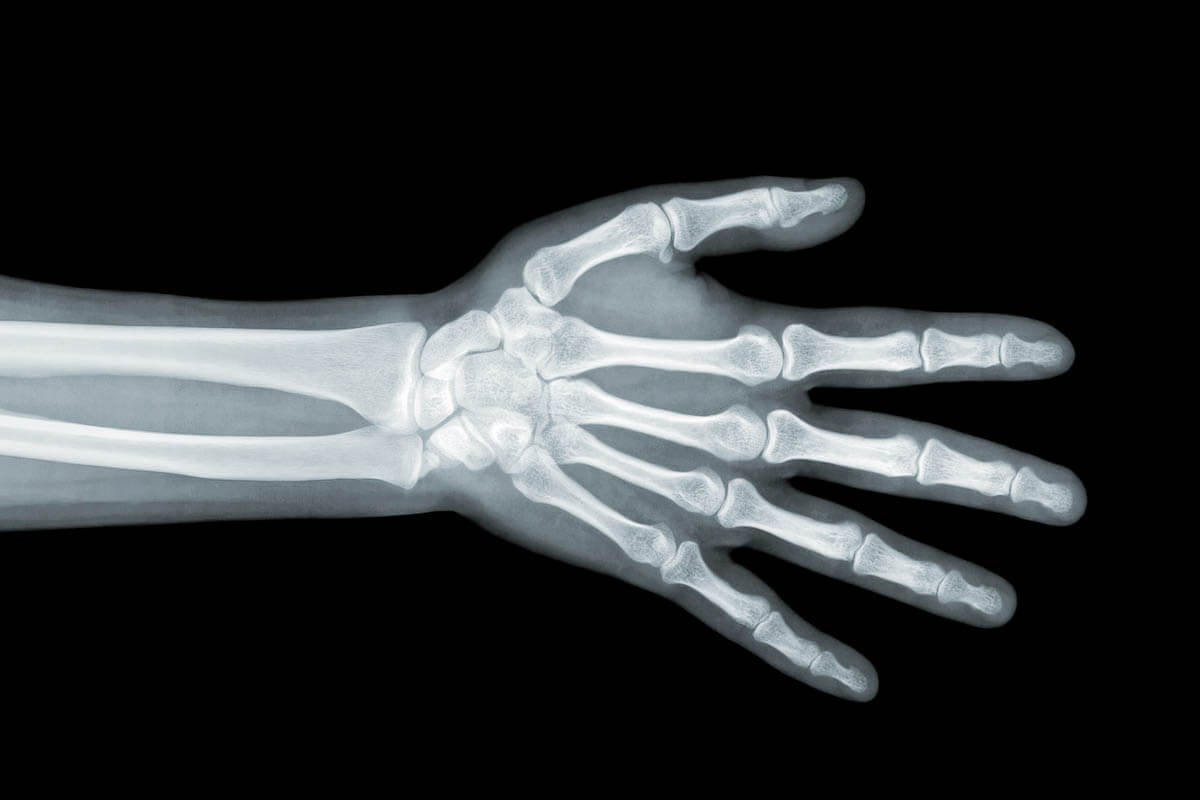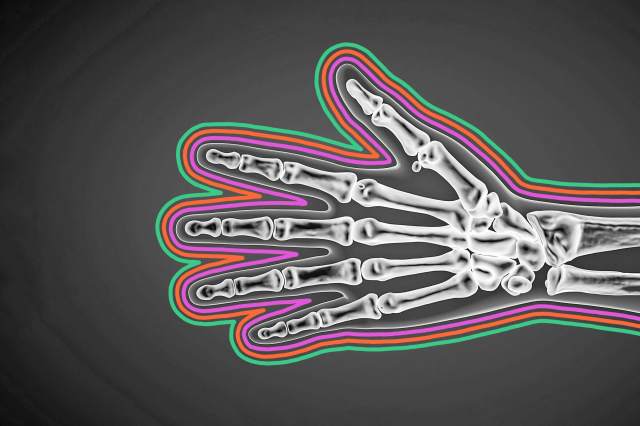
The Smallest Muscle Stabilizes the Body’s Smallest Bone
The smallest muscle and the smallest bone in the human body form a convenient pair. The inner ear is home to the body’s three smallest bones, known collectively as the ossicles. Taken together, these bones are about the size of an orange seed, but the stapes is the smallest of them all. The stapes, which means “stirrup” in Latin (a reference to its shape), is essential to human hearing. Sound initially vibrates the tympanic membrane, otherwise known as the eardrum, and then travels through the ossicles. The stapes is the last bone in this chain, and causes a wave of fluid to generate in the inner ear that begins a process of converting sound waves into electrical signals that can be read by the brain. This incredibly tiny bone is supported by an equally tiny muscle called the stapedius. At less than 2 millimeters long, the stapedius is the smallest muscle in the human body.

The Human Body’s Veins Could Stretch 60,000 Miles
There are some surprising lengths packed inside the human body. There’s the small intestine, for example, which could stretch 22 feet end to end (though hopefully it never has to). Not to be outdone, our nerves could stretch 37 miles if laid end to end. However, none of this compares to our circulatory system. According to the British Heart Foundation, the veins in an adult human could stretch an astonishing 60,000 miles — that’s farther than it takes to circumnavigate the globe twice. Capillaries, which transport blood between arteries and veins, make up 80% of this length.

Even Ancient Greeks Knew About the Body’s Smallest Organ
The smallest organ in the human body is located in a place you’d never think to look — the brain. The pineal gland, named after its pinecone-like appearance, is in charge of regulating our circadian rhythm by secreting melatonin. The Greek physician Galen originally named the pineal gland in the second century CE, and believed it regulated the flow of “psychic pneuma.” Descartes elaborated on the pineal gland’s function in the early 17th century, believing it was the point of contact where the soul met the body and was primarily where thoughts were formed. The gland’s true powers weren’t discovered until 1958.
More Interesting Reads

The Heel Hosts the Most Variety of Fungus of Any Body Part
Not every bodily superlative is a happy one. In 2013, scientists analyzed the human body to discern what nook or crevice played host to the greatest variety of microscopic fungi. After conducting close inspections of palms, feet, toenails, groins, nostrils, and more, the researchers determined that the human heel is the body part most ripe with fungi. The heel of the foot contains 80 different types of fungi, and that number only increases when you include the rest of the foot, as toenails were found to provide refuge for 60 types of fungi (the space between toes adds another 40). While not all fungi are necessarily harmful, about half of them can be, and these numbers may help explain why feet are prone to fungal infection such as athlete’s foot.

The Hand Has the Most Bones of Any Body Part
There are 206 bones in the average adult human body, and our hands take up the lion’s share. Each hand is home to 27 bones, along with 34 muscles and 123 ligaments. Some experts estimate that a quarter of the motor cortex, the part of the brain responsible for voluntary movement, is devoted to the manipulation of our hands alone.
Although hands are impressive structures, they only just beat our feet by one measly bone. Because Homo sapiens’ primate ancestors walked on all fours, human hands and feet developed in similar ways. In fact, almost every bone in the palm is arranged in a pattern similar to the metatarsals in the foot. The only exception is a bone located at the edge of the wrist called the pisiform, which attaches various ligaments and tendons.

The Largest Lobe in the Brain Is What Makes Us Human
The frontal lobe is the largest lobe in the human brain, with studies placing its size between 25% to 40% of the cerebral cortex. Although all parts of the human brain work together, the frontal lobe is the region most associated with distinctively human characteristics such as language, creativity, and abstract thought. That’s why common systems of illnesses or injuries affecting the frontal lobe can affect someone’s personality, behavior, and in some cases, memory.
A famous medical case representing early investigations into the importance of the frontal lobe happened when a 19th-century railroad worker named Phineas Gage was severely injured after a premature explosion drove an iron bar through his skull. Though he survived the experience, Gage’s personality was irreparably altered to an almost childlike state, and his friends and family declared he was “no longer Gage.” His condition upended long-standing theories regarding the relation of the human mind and the brain, and today the case remains one of the greatest medical curiosities in history.











